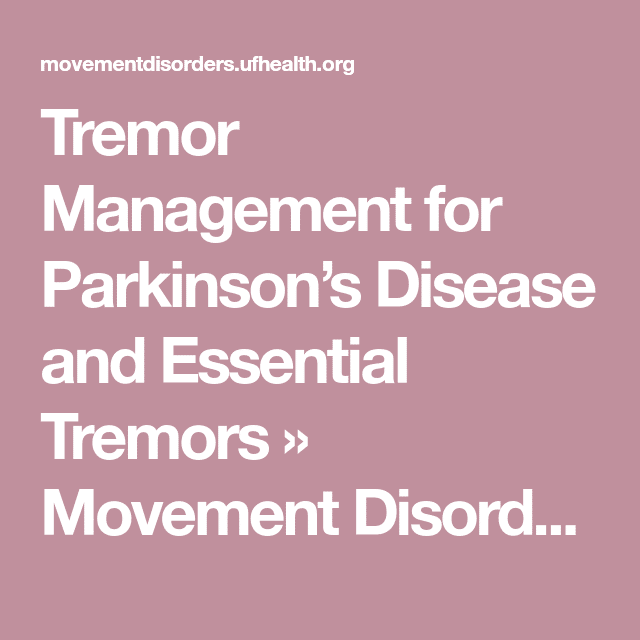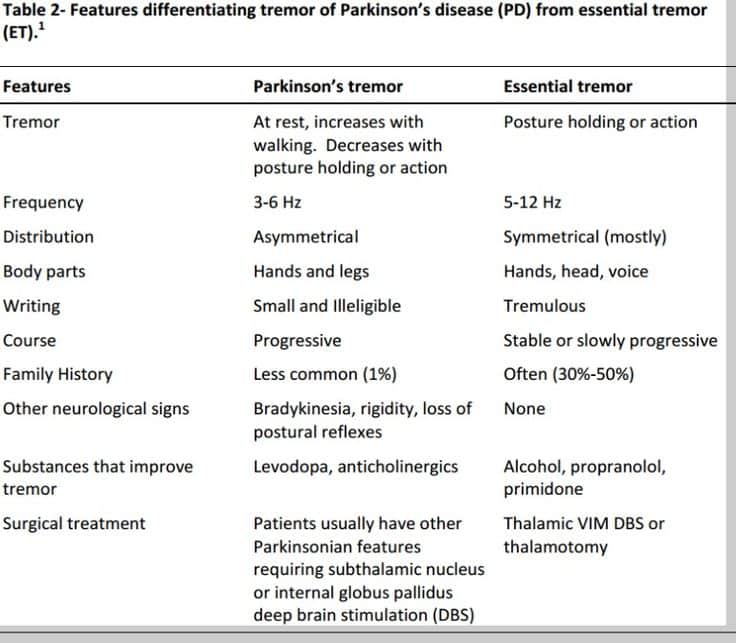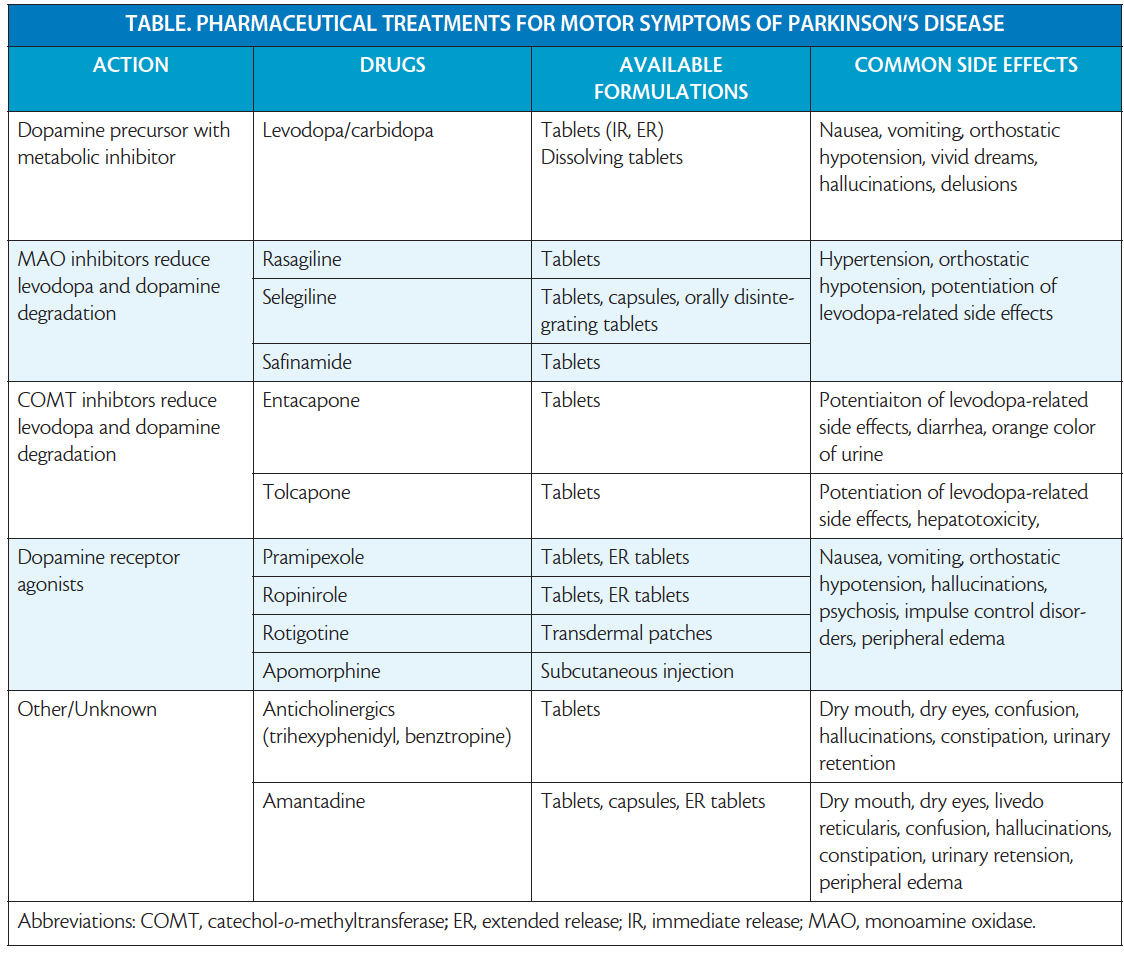Surgical Therapies With Transplantation And Gene Therapy
Cell transplantation is regarded as a potential future PD treatment. There have been trials using autologous and non-autologous cells. Human embryonic stem cells and induced pluripotent stem cells are few of the cells that have been included in these transplantation studies. One of the concerns with cell transplantation using stem cells is the ethical bounds that must be considered.
Since the first clinical trial in 1987 involving the transplantation of dopaminergic- neuron-rich human fetal mesencephalic tissue into PD patients striatums, more research has aimed to explore whether the grafted dopaminergic neurons will live and form connections in the brain, if the patients brain can harmonize and make use of the grafted neurons, and if the grafts can generate significant clinical improvement. Clinical trials with cell therapy intend to discover if there are long-lasting improvements following restoration of striatal DA transmission by grafted dopaminergic neurons. Experimental data from rodents and nonhuman primates show that fetal ventral mesencephalon intrastriatal grafted DA neurons demonstrate many morphological and functional characteristics of normal DA neurons. Significant improvements of PD-like symptoms in animal models have been demonstrated after successful reinnervation by the grafts. Dopaminergic grafts can reinnervate the striatum in the brain, restore regulated release of DA in the striatum, and can become functionally integrated into neural circuitries.
When Should I See My Healthcare Provider Or When Should I Seek Care
You should see your healthcare provider as recommended, or if you notice changes in your symptoms or the effectiveness of your medication. Adjustments to medications and dosages can make a huge difference in how Parkinsons affects your life.
When should I go to ER?
Your healthcare provider can give you guidance and information on signs or symptoms that mean you should go to the hospital or seek medical care. In general, you should seek care if you fall, especially when you lose consciousness or might have an injury to your head, neck, chest, back or abdomen.
The Difference In The Appearance Of Tremor
Essential tremor is usually an action tremor. It means that it appears when the hands are performing activities like drinking, eating, and writing.
On the other hand, tremor in Parkinsons disease appears when the hands are at rest. This is why its also known as resting tremor.
This is an easy way to differentiate between the two tremors and often used as a useful diagnostic criterion at the clinic.
Read Also: Infrared Helmet For Parkinsons Disease
Don’t Miss: Parkinson’s Disease Charity Donations
Impact Of Tremor For Patients With Early Stage Parkinsons Disease
Patients with early stage PD consistently rank tremor as highly important, even when asked to consider other diverse aspects of their condition. Tremor was cited as the most bothersome symptom in a survey of 75 PD patients with relatively mild symptom severity . Twenty-eight percent of patients mentioned tremor in their open-ended response to the question, Which two problems related to Parkinsons disease bother you most?
The psychosocial impact of tremor for many PD patients is insidious and profound and goes well beyond a general annoyance . During an in-depth structured interview , patients and caregivers shared emotional and highly compelling stories of trying to disguise tremor during the early stages of PD by wearing clothes with pockets or hiding an affected hand behind ones back. They went further to express dreading the progression of their tremor during later stages of PD with remarks such as, as it changes to slavering and trembling in a corner, I will find that a horror.
Confusion With Essential Tremor

The tremor of Parkinsons disease is often confused with the tremor of a condition called Essential Tremor, or Benign Familial Tremor. Katherine Hepburn had Essential Tremor, and was originally misdiagnosed with Parkinsons. Ronald Reagan, also, had Essential Tremor. Both had a head tremor and a vocal tremor. With Essential Tremor, the hands are most commonly involved, followed by the head and then the voice. Essential Tremor can cause the jaw to tremor, and it may be difficult to figure out if a jaw tremor is from Essential Tremor or Parkinsons. Unfortunately, some people may have both disorders. Some authorities believe that there is, in fact, an increased association between the two conditions, so that more people with Parkinsons disease have Essential Tremor than would be expected by chance alone, but this has not been established.
You May Like: Parkinson’s And Itchy Scalp
Parkinsons Or Benign Essential Tremor
Essential tremors may be confused with the tremors in Parkinsons disease. However, essential tremors usually affect both extremities equally and get worse when the hands are used, in contrast to Parkinsons tremors. Also, Parkinsons tremors are reduced or temporally stopped with carbidopa-levodopa medication while essential tremors respond to other medications. Parkinsons disease does not usually occur in multiple family members but essential tremors do and are more common than Parkinsons tremors.
Not All People With Essential Tremor Need Treatment
For roughly one-third of people with essential tremor, their symptoms are mild enough that no treatment is necessary. Another third have symptoms that are only bothersome when they are in high stress situations, such as having to give a speech in front of a room full of strangers. These people only need sporadic treatment, for those times when their tremor is going to be particularly debilitating, says Weintraub. The last third have essential tremor thats severe enough that they need treatment in order to be able to function in their daily lives.
Also Check: Parkinson’s Aware In Care Kit
Treatments For Essential Tremor
According to Harvard.edu, there are several actions that can be taken to help manage your essential tremor and minimize how they impact your daily life. First, lets cover treatment options:
As each patient is different, you and your doctor will need to decide what the best course of action is for you. You must weigh the pros and cons of each treatment option based on your lifestyle and how you think theyll impact your quality of life.
What Does It Look Like
The primary type of muscle tremor in PD is called a resting tremor. This type of tremor occurs when a person is not trying to move a limb or that limb is at rest. In PD rest tremors are common in the hands.1,2
A common type of rest tremor seen in PD is the “pill rolling” tremor. In this tremor it appears as if a person is rolling a pill between their thumb and index finger.1,2
Physical or emotional stress can make this tremor worse. Purposeful movement can make this tremor better. This tremor often starts on 1 side of the body, such as in just the right hand. The tremor may worsen over time and start affecting both sides of the body. Sometimes the chin, lips, face, or legs are affected.1,2
Read Also: Cbd Dosage For Parkinson’s
What Medications And Treatments Are Used
Medication treatments for Parkinsons disease fall into two categories: Direct treatments and symptom treatments. Direct treatments target Parkinsons itself. Symptom treatments only treat certain effects of the disease.
Medications
Medications that treat Parkinsons disease do so in multiple ways. Because of that, drugs that do one or more of the following are most likely:
Several medications treat specific symptoms of Parkinson’s disease. Symptoms treated often include the following:
- Erectile and sexual dysfunction.
- Hallucinations and other psychosis symptoms.
Deep brain stimulation
In years past, surgery was an option to intentionally damage and scar a part of your brain that was malfunctioning because of Parkinsons disease. Today, that same effect is possible using deep-brain stimulation, which uses an implanted device to deliver a mild electrical current to those same areas.
The major advantage is that deep-brain stimulation is reversible, while intentional scarring damage is not. This treatment approach is almost always an option in later stages of Parkinson’s disease when levodopa therapy becomes less effective, and in people who have tremor that doesnt seem to respond to the usual medications.
Experimental treatments
Researchers are exploring other possible treatments that could help with Parkinsons disease. While these arent widely available, they do offer hope to people with this condition. Some of the experimental treatment approaches include:
Limitations Side Effects And Long
Baltuch cautions, however, that focused ultrasound thalamotomy is not without risk or side effects, there are limitations, and there are not yet long-term studies.
- Side effects: Side effects include difficulty walking or unsteadiness following the procedure, along with tingling or numbness in the lips or fingers. Most issues resolve within months.
- Limitations: Currently, only one side of the body can be treated. Earlier forms of surgical ablation sometimes resulted in speech difficulties, so for now, the FDA has limited treatment to one side of the brain. The side that controls the patients dominant hand is usually targeted. INSIGHTEC is exploring bilateral treatment in medical centers outside the U.S. In addition, while treatment can reduce or eliminate tremors on one side of the body, it does not stop other symptoms of Parkinsons or slow disease progression.
- Long-term studies: Because five- and 10-year studies have not yet been conducted, We dont yet long-term effectiveness of focused ultrasound thalamotomy for tremor-dominant Parkinsons and essential tremor, says Baltuch. The published data show that this may not be as effective in tremor reduction as, potentially, deep brain stimulation can. And, although its non-invasive, youre still making a thermal lesion .
You May Like: Parkinsons Bike Therapy
Read Also: Does Michael J Fox Have Parkinson’s
What Can I Expect If I Have This Condition
Parkinsons disease is a degenerative condition, meaning the effects on your brain get worse over time. However, this condition usually takes time to get worse. Most people have a normal life span with this condition.
You’ll need little to no help in the earlier stages and can keep living independently. As the effects worsen, youll need medication to limit how the symptoms affect you. Most medications, especially levodopa, are moderately or even very effective once your provider finds the minimum dose you need to treat your symptoms.
Most of the effects and symptoms are manageable with treatment, but the treatments become less effective and more complicated over time. Living independently will also become more and more difficult as the disease worsens.
How long does Parkinsons disease last?
Parkinsons disease isnt curable, which means its a permanent, life-long condition.
Whats the outlook for Parkinsons disease?
Parkinson’s disease isn’t fatal, but the symptoms and effects are often contributing factors to death. The average life expectancy for Parkinson’s disease in 1967 was a little under 10 years. Since then, the average life expectancy has increased by about 55%, rising to more than 14.5 years. That, combined with the fact that Parkinson’s diagnosis is much more likely after age 60, means this condition doesn’t often affect your life expectancy by more than a few years .
What Makes A Parkinsons Tremor Different

The tremor that occurs in Parkinsons disease is different from almost all other tremors because it is a resting tremor since it presents primarily at rest. It goes away with movement, but often returns when the limb, usually a hand or fingers, are held in one position. While holding a spoon or fork to the mouth, the tremor can reappear which is why those with Parkinsons are known to spill things. Parkinsons disease tremor may affect almost any part of the body, but most commonly involves the fingers, followed next most commonly by the hands, jaw, and feet.
Recommended Reading: Mri Brain Scan For Parkinson’s Disease
Who Does It Affect
The risk of developing Parkinsons disease naturally increases with age, and the average age at which it starts is 60 years old. Its slightly more common in men or people designated male at birth than in women or people designated female at birth .
While Parkinsons disease is usually age-related, it can happen in adults as young as 20 .
Tremor In Other Conditions
While tremor is a common symptom of PD, it can also be a symptom of other conditions, most notably essential tremor. The main difference between Parkinsons tremor and most other types of tremor is that in PD resting tremor is most common. Other conditions are usually characterized by action tremor, which tends to lessen at rest and increase when youre doing something, like trying to make a phone call or take a drink. Tremors of the head and voice are also common in essential tremor but rare in PD.
Also Check: Apps For Parkinson’s Patients
How Soon After Treatment Will I Feel Better And How Long Will It Take To Recover
The time it takes to recover and see the effects of Parkinsons disease treatments depends strongly on the type of treatments, the severity of the condition and other factors. Your healthcare provider is the best person to offer more information about what you can expect from treatment. The information they give you can consider any unique factors that might affect what you experience.
Twitching Fingers Were Daves First Sign
He asked me if I had any concerns about my health, and I told him I was worried about my cholesterol, and oh, by the way, Ive noticed in the past three or four months I occasionally have an involuntary twitch with my index and middle finger on my left hand.
There are many different types of tremor. What are the differences?
Finger Twitching
The pill rolling tremor that is often described in medical texts refers to the tremors of the fingers, usually the thumb plus the other fingers, that makes it look as if the person is rolling a pill in the fingers. This is most often the part of the body where tremors will begin.
Jaw Tremors
Jaw tremor is common in Parkinsons, whereas head tremor is not. The jaw tremor looks very much like shivering, although usually slower. It goes away with movement, so it is not present while chewing. It is extremely irritating when it is severe enough to cause the teeth to click together. For people with dentures, it may keep the dentures from staying in place, in addition to attracting attention because of the clicking sounds. Chewing gum stops the tremor.
Foot Tremors
Tongue Tremor
Sometimes the tongue has a tremor, and in about 1% of Parkinsons disease cases the head shakes. Sometimes the head tremors because the arms are shaking and the tremor is simply transmitted. The voice, while frequently involved in Parkinsons, is never involved by tremor.
Don’t Miss: Beginning Of Parkinson’s Symptoms
Classification Of Motor Phenotypes For Pd Patients
Motor symptoms were assessed by the Unified Parkinsons Disease Rating Scale III. Motor phenotypes were identified based on the ratio of mean tremor score to the mean bradykinesia/rigid score . Patients with a ratio greater than 1.0, less than 0.80, and between 0.80 and 1.0 were classified into PD-TD, PD-PIGD, and mixed-types , respectively. The patients of mixed-type were excluded due to the mixed motor phenotype.
When Its Not Parkinsons: Non
Everyone has some amount of tremor. Physiologic tremors are common, barely noticeable amounts of shakiness that worsen when people are stressed, anxious, or have had too much caffeine. As long as the tremors are not significant and do not affect your day-to-day activities, they may be completely normal.
Even tremors that are not normal are not always caused by Parkinsons. They can be caused by a range of other conditions, which together are known as movement disorders.
You May Like: Parkinson’s Off Episodes Symptoms
Lifespan And Treatment For Parkinson’s
Dr. Wang explains, “Unlike Alzheimer’s disease and other neurodegenerative diseases, most people with Parkinson’s have normal or near normal lifespan. The disease itself is usually not fatal, but rather complications such as pneumonia and infection and fall-related injuries. Since Parkinson’s disease is essentially a disease where the dopaminergic cells of the brain die off, every medication used to treat PD essentially tries to replace the dopamine that is lost.
The mainstay of PD treatment is still carbidopa-levodopa, commonly known as Sinemet, that can be taken as frequently as needed to relieve certain symptoms such as tremor and slowness of movement. It is important to note that medications only mask symptoms, there are no medications to actually slow or stop the disease process. There are many new medications that have been developed, and beyond the scope of this article to talk about here, but every medication developed does essentially the same thing: more dopamine in the brain.
Pathological Changes In The Cerebellum In Pd

PD is characterized by Lewy body pathology formed by -synuclein, while cerebellum was thought to be unaffected by Lewy bodies previously,. However, recent studies discovered -synuclein-related pathological changes in the cerebellum in PD patients, which may be associated with tremor symptoms. In PD patients, -synuclein-formed Lewy bodies, which were speculated to originate in the pre-cerebellar brainstem and spread in a prion-like manner, were identified in the cerebellum. Lewy bodies were found mainly in the cerebellar nuclei and adjacent white matters, while cerebellar lobules were only affected mildly. Histologically, in the cerebellum of PD patients, Lewy bodies were found in Bergmann glia in the molecular layer and Purkinje cell axons,.
PD patients have longer climbing fiber length, more climbing fibers extending into the molecular layer, more climbing fiber-Purkinje cell synapses, and increased percentage of climbing fiber-Purkinje cell synapses on the thin Purkinje cell dendritic branchlets compared with healthy controls, accompanied by torpedoes/swelling of Purkinje cell axons,. Based on cluster analysis, these pathological changes may form a pattern that predicts the presence of resting tremor, PD patients with lower climbing-fiber synaptic density and a higher Purkinje cell count tend to have rest tremor.
Also Check: Does Parkinson’s Disease Affect The Mind